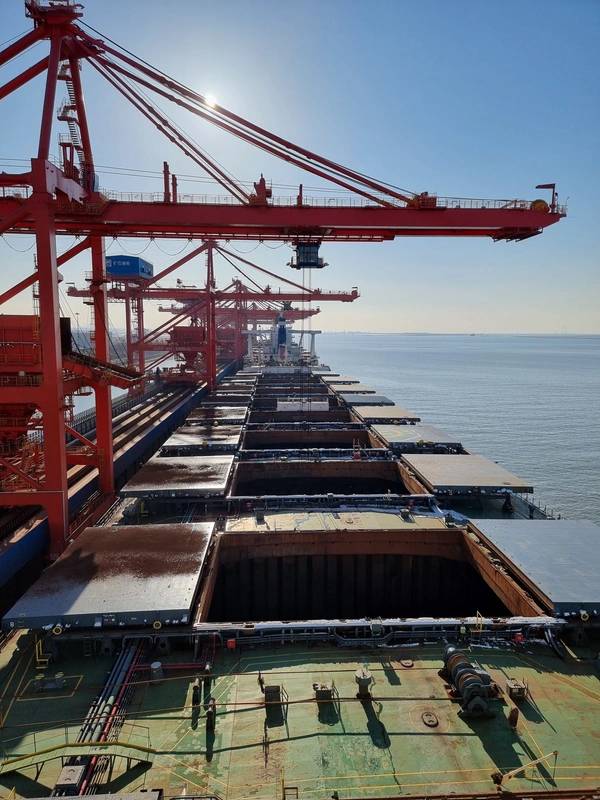
A new study from the West Australia – East Asia Iron Ore Green Corridor Consortium finds that ships powered by clean ammonia could be deployed on the iron ore trade routes between West Australia and East Asia by 2028 and reach 5% adoption by 2030.
Findings suggest that it is possible to get clean ammonia-powered bulk carriers on the water by 2028, provided the development of key technologies, such as suitable engines, and regulations remain on track.
The study finds that enough vessels will be retiring to enable the introduction of most of the clean-ammonia vessels required, with limited need for retrofits or early retirements. If orders are placed over the coming years, almost all clean ammonia-powered vessels on the corridor up to 2035 could be deployed in this way.
Enough clean ammonia will likely be available to meet the corridor’s near and long-term requirements. Should production scale up as expected, the corridor’s demand could be fully met by Australian clean ammonia but could also be imported from other production locations globally. The study also shows that the Pilbara region of Australia is a viable option for bunkering on the route, avoiding costly deviations from the trade route, whilst Singapore remains well-positioned to serve as a bunkering hub.
Should the corridor develop in accordance with the scenario in the analysis, more than 20 vessels could operate on clean ammonia on the corridor by 2030, scaling up to roughly 360 vessels by 2050.
While the opportunity to develop a West Australia-East Asia green corridor is within reach, the study also outlines important conditions that must be in place for it to be successfully developed, including continued collaboration and coordinated action through the corridor’s value chain and the development of appropriate commercial frameworks. In parallel with this study, the Getting to Zero Coalition has established an Australia-East Asia
Iron Ore Corridor Task Force to act as a collaborative industry forum to explore these issues.
The study is based on analysis by the Energy Transitions Commission, on behalf of the West Australia – East Asia Iron Ore Green Corridor Consortium, a collaboration between the Global Maritime Forum, BHP, Rio Tinto, Oldendorff Carriers, and Star Bulk Carriers.
The study reinforces the corridor’s potential to be a first mover in shipping’s decarbonisation and builds on the previously published pre-feasibility report, which identified the iron ore shipping routes from West Australia to China and Japan as having favourable conditions for early action and the potential to have a large impact on the decarbonisation of the sector.



